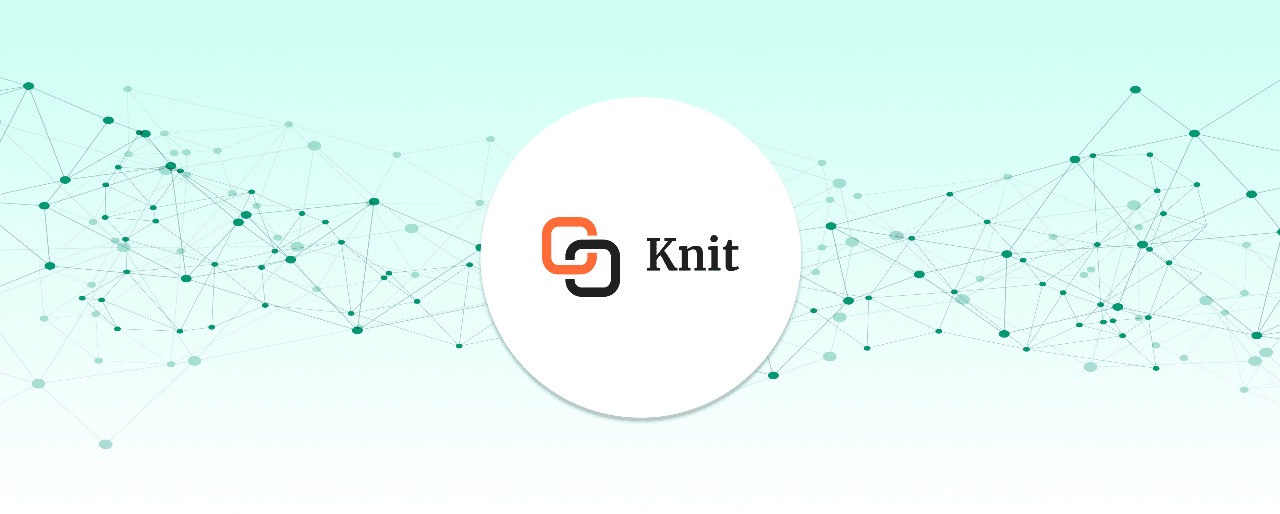Introduction to Sage Intacct API
Sage Intacct API integration allows businesses to connect financial systems with other applications, enabling real-time data synchronization and reducing errors and missed opportunities. Manual data transfers and outdated processes can lead to errors and missed opportunities. This guide explains how Sage Intacct API integration removes those pain points. We cover the technical setup, common issues, and how using Knit can cut down development time while ensuring a secure connection between your systems and Sage Intacct.
Overview of Sage Intacct API Integration
Sage Intacct API integration integrates your financial and ERP systems with third-party applications. It connects your financial information and tools used for reporting, budgeting, and analytics.
- What is Sage Intacct API integration?
It allows two or more software systems to share data seamlessly. This connection reduces manual entries and synchronizes data across platforms. - The role of APIs in modern ERP and financial management:
APIs facilitate real-time data exchange and perform repetitive tasks automatically. They are the foundation of contemporary software systems as they make sure each component is current. - Why seamless integration matters for your business:
A reliable API integration cuts down on errors, saves time, and provides access to real-time insights that help in strategic planning.
Overview of Sage Intacct API Documentation
The Sage Intacct API documentation provides all the necessary information to integrate your systems with Sage Intacct’s financial services. It covers two main API protocols: REST and SOAP, each designed for different integration needs. REST is commonly used for web-based applications, offering a simple and flexible approach, while SOAP is preferred for more complex and secure transactions.
By following the guidelines, you can ensure a secure and efficient connection between your systems and Sage Intacct.
Key Features Included:
- API Types: REST (simpler, web-based) and SOAP (robust, secure).
- Endpoint Structure: Learn how to interact with functions like invoicing, reporting, and customer management.
- API Usage Limits: Understand the traffic limits to avoid throttling.
- Authentication: Detailed methods for secure API access.
- Best Practices: Recommendations to optimize your integration.
Business and Technical Benefits of Sage Intacct API
Integrating Sage Intacct with your existing systems offers a host of advantages.
- Real-time synchronization of financial data: Stay in sync with the newest financial records as they occur.
- Automation of repetitive financial tasks: Avoid manual data entry and minimize the chances of errors.
- Improved reporting, compliance, and analytics: Facilitate better decision-making by bringing together timely, accurate data.
- Scalability and improved operational efficiency: Easily adjust to growing data loads without sacrificing performance.
Steps for Building a Sage Intacct API Integration
Before you start the integration process, you should properly set up your environment. Proper setup creates a solid foundation and prevents most pitfalls.
STEP 1: Setting up a Sage Intacct tenant and obtaining API endpoint
A clear understanding of Sage Intacct’s account types and ecosystem is vital.
- Sage Intacct account types (Demo vs. Production):
- Demo Account: Use this for testing and proof-of-concept projects. It mimics the production environment.
- Production Account: This account handles live data and transactions.
- Developer Registration:
Before you can start using the API, you must register as a developer with Sage Intacct. To do this:
- Sign up on the Sage Intacct Developer portal.
- Request your Sender ID, User ID, and Company ID, which are required for authentication.
- Understanding the Sage Intacct ecosystem and access tiers:
Know the differences between various access tiers. Each tier has specific permissions and usage limits. - Reviewing Sage Intacct API usage limits and guidelines:
Get familiar with the API limits to prevent throttling during heavy traffic. Always refer to the latest guidelines in the official documentation.
STEP 2: Establishing a Secure Development Environment
A secure environment protects your data and credentials.
- Benefits of using a sandbox environment:
Test your integration without affecting live data. A sandbox replicates your production environment safely. - Steps to create and configure a Sage Intacct sandbox:
- Sign up for a demo account.
- Follow the setup wizard to configure your sandbox.
- Test all functions thoroughly before moving to production.
- Best practices for data anonymization and security:
- Use dummy data for testing.
- Ensure API credentials are stored securely.
- Limit access to the development environment.
STEP 3: Enabling API Access and Setting Up Authentication
Setting up authentication is crucial to secure the data flow.
- Configuring API permissions and roles:
Assign roles based on the principle of least privilege. Only allow necessary permissions to each user. - Overview of available authentication methods:
- Web Services Authentication: Uses XML-based requests.
- OAuth 2.0: Offers secure token-based authentication.
- Generating and managing API credentials:
Follow official documentation to create and store API keys or tokens securely. - Troubleshooting common authentication challenges:
- Check API endpoint URLs.
- Ensure your credentials are correct.
- Monitor logs for errors and consult Sage Intacct support if needed.
STEP 4: Sage Intacct API Options: SOAP vs REST
An understanding of the different APIs and protocols is necessary to choose the best method for your integration needs.
API Architecture and Protocols
Sage Intacct offers a flexible API ecosystem to fit diverse business needs.
- Overview of Sage Intacct’s API ecosystem:
Sage Intacct provides multiple API protocols to interact with its services. You have choices depending on your technical preference. - REST vs. SOAP: Which fits your use case?
- REST: Simpler, uses JSON, and is widely used for modern web applications.
- SOAP: More robust, relies on XML, and can be better for strict enterprise requirements.
- Understanding key endpoints and services:
Look for endpoints that map to critical business functions such as invoicing, customer management, and reporting.
Sage Intacct REST API Overview
The Sage Intacct REST API offers a clean, modern approach to integrating with Sage Intacct.
- Introduction to the RESTful API framework:
REST APIs use standard HTTP methods. They are easy to implement and scale well. - Common REST endpoints and their functionalities:
- GET: Retrieve data.
- POST: Create new records.
- PUT: Update existing records.
- DELETE: Remove records.
- Example of GET API:
Curl request:
curl -i -X GET \ 'https://api.intacct.com/ia/api/v1/objects/cash-management/bank-acount {key}' \-H 'Authorization: Bearer <YOUR_TOKEN_HERE>'Here’s a detailed reference to all the Sage Intacct REST API Endpoints.
Sage Intacct SOAP API Overview
For environments that need robust enterprise-level integration, the Sage Intacct SOAP API is a strong option.
- Introduction to the SOAP API environment:
SOAP uses XML for its messages. It enforces strict rules on message structure. - Working with WSDL, XML requests, and responses:
Developers use a WSDL file to understand available methods. Your XML requests must adhere to the schema defined. - Example:
Each operation is a simple HTTP request. For example, a GET request to retrieve account details:
Parameters for request body:
<read>
<object>GLACCOUNT</object>
<keys>1</keys>
<fields>*</fields>
</read>Data format for the response body:
- xml (default)
- json
- Csv
Here’s a detailed reference to all the Sage Intacct SOAP API Endpoints.
Comparing SOAP versus REST for various scenarios:
- SOAP: Better for complex transactions and when high security is required.
- REST: Preferred for lighter, web-based interactions.
Additional Integration Options
Beyond the primary REST and SOAP APIs, Sage Intacct provides other modules to enhance integration.
- Overview of other available modules and scripting capabilities:
Use custom scripts to automate tasks not covered by standard endpoints. - Custom scripting and automation possibilities with Sage Intacct:
Developers can extend functionalities using server-side scripts and connectors. Refer to the official scripting guides for more details.
STEP 5: Building Your Sage Intacct API Integration (With Examples)
Now that your environment is ready and you understand the API options, you can start building your integration.
Making Your First API Call
A basic API call is the foundation of your integration.
Step-by-step guide for a basic API call using REST and SOAP:
REST Example:
- Set up your environment.
- Authenticate using your API token.
- Send a GET request to a sample endpoint say list a customer.
Example:
Curl Request:
curl -i -X GET \
https://api.intacct.com/ia/api/v1/objects/accounts-receivable/customer \
-H 'Authorization: Bearer <YOUR_TOKEN_HERE>'
Response 200 (Success):
{
"ia::result": [
{
"key": "68",
"id": "CUST-100",
"href": "/objects/accounts-receivable/customer/68"
},
{
"key": "69",
"id": "CUST-200",
"href": "/objects/accounts-receivable/customer/69"
},
{
"key": "73",
"id": "CUST-300",
"href": "/objects/accounts-receivable/customer/73"
}
],
"ia::meta": {
"totalCount": 3,
"start": 1,
"pageSize": 100
}
}
Response 400 (Failure):
{
"ia::result": {
"ia::error": {
"code": "invalidRequest",
"message": "A POST request requires a payload",
"errorId": "REST-1028",
"additionalInfo": {
"messageId": "IA.REQUEST_REQUIRES_A_PAYLOAD",
"placeholders": {
"OPERATION": "POST"
},
"propertySet": {}
},
"supportId": "Kxi78%7EZuyXBDEGVHD2UmO1phYXDQAAAAo"
}
},
"ia::meta": {
"totalCount": 1,
"totalSuccess": 0,
"totalError": 1
}
}
SOAP Example:
- Set up your WSDL-based client.
- Create an XML request as per the schema.
- Send the request and process the XML response:
Example snippet of creating a reporting period:
<create>
<REPORTINGPERIOD>
<NAME>Month Ended January 2017</NAME>
<HEADER1>Month Ended</HEADER1>
<HEADER2>January 2017</HEADER2>
<START_DATE>01/01/2017</START_DATE>
<END_DATE>01/31/2017</END_DATE>
<BUDGETING>true</BUDGETING>
<STATUS>active</STATUS>
</REPORTINGPERIOD>
</create>- Setting up your development environment and authentication:
Ensure that you follow best practices for API key storage. Use environment variables or secure vaults. - Interpreting API responses and error handling:
Check status codes and error messages. A 200 status code indicates success, while a 400 or 500 series indicates issues.
Postman Usage
Using Postman for Testing and Debugging API Calls
Postman is a good tool for sending and confirming API requests before implementation to make the testing of your Sage Intacct API integration more efficient.
You can import the Sage Intacct Postman collection into your Postman tool, which has pre-configured endpoints for simple testing. You can use it to simply test your API calls, see results in real time, and debug any issues.
This helps in debugging by visualizing responses and simplifying the identification of errors.
Mapping Business Processes to API Workflows
Mapping your business processes to API workflows makes integration smoother.
- Automating invoice generation and payment processing:
Use API calls to trigger invoice creation and payment confirmation.- Define the data flow from order entry to invoice output.
- Use error-handling routines to catch exceptions during processing.
- Synchronizing customer and vendor data across platforms:
Maintain a consistent view of your contacts by syncing updates in real time.- Map fields between your CRM and Sage Intacct.
- Schedule regular sync jobs to update records.
- Integrating financial reporting and analytics tools:
Pull data into BI tools to generate live reports.- Use data batching and pagination to manage large volumes.
- Implement caching strategies to reduce load on the API endpoints.
To test your Sage Intacct API integration, using Postman is recommended. You can import the Sage Intacct Postman collection and quickly make sample API requests to verify functionality. This allows for efficient testing before you begin full implementation.
Real-World Integration Scenarios and Case Studies
Understanding real-world applications helps in visualizing the benefits of a well-implemented integration.
Use Cases Across Industries
This section outlines examples from various sectors that have seen success with Sage Intacct integrations.
- Examples of successful Sage Intacct integrations:
- Skydance:
Skydance integrated Sage Intacct to synchronize their financial and production data. This automation improved invoice processing and provided real-time visibility into project budgets. - XML International:
XML International leveraged the API to streamline vendor management and reporting. Their integration automated data reconciliation processes, reducing manual intervention and cutting processing time significantly.
- Skydance:
- How various sectors benefit from integration:
- Retail:
Integrate point-of-sale systems to update inventory and sales records in real time. - Manufacturing:
Connect production management with financial reporting to track costs and resource allocation efficiently. - Services:
Sync project-based billing systems with financial records for improved cash flow management.
- Retail:
Industry
Sage Intacct Partnership Program
Joining a sage intacct partnership program can offer additional resources and support for your integration efforts.
Overview of the Partnership Program
The partnership program enhances your integration by offering technical and marketing support.
- Key benefits and strategic features:
- Access to exclusive technical resources.
- Early access to new API features and updates.
- Co-marketing opportunities that boost your market presence.
- How the partnership enhances integration and drives business growth:
- Streamlined support for resolving technical issues.
- Training and certification programs for your team.
- Joint ventures to expand your market reach.
Partnership Levels and Opportunities
Different partnership tiers cater to varied business needs.
- Description of partnership tiers:
- Authorized Partner: Basic support and access to essential resources.
- Premium Partner: Enhanced support, training, and co-marketing initiatives.
- Exclusive benefits for partners:
- Priority technical support.
- Dedicated account management.
- Invitations to exclusive events and webinars.
Best Practices for Sage Intacct API Integration
Following best practices ensures that your integration runs smoothly over time.
Optimizing Performance and Scalability
Manage API calls effectively to handle growth.
- Managing API rate limits and avoiding throttling:
- Use batching and pagination to limit the number of requests.
- Monitor usage and adjust call frequencies as needed.
- Efficient data retrieval:
- Apply caching strategies for frequently accessed data.
- Use pagination to handle large data sets.
- Tips for scaling your integration:
- Regularly review API performance metrics.
- Consider load-balancing solutions for high-traffic periods.
Securing Your API Environment
Security must remain a top priority.
- Safeguarding API credentials and data:
- Store credentials in secure vaults or environment variables.
- Use encryption for data in transit and at rest.
- Implementing role-based access control (RBAC) and encryption protocols:
- Grant permissions based on user roles.
- Regularly update and audit access controls.
Monitoring and Logging
Effective monitoring helps catch issues early.
- Set up logging: Track API calls and responses to troubleshoot errors.
- Use monitoring tools: Set alerts for unusual patterns and track API health via dashboards.
- Regular health checks: Schedule periodic reviews and ensure timely updates and patches to maintain security.
Troubleshooting and Support
No integration is without its challenges. This section covers common problems and how to fix them.
Common Integration Challenges
Prepare for and resolve typical issues quickly.
- Authentication and connectivity issues:
- Verify credentials.
- Check network settings and firewall rules.
- Handling data discrepancies and synchronization errors:
- Compare API logs with your internal records.
- Implement validation checks during data transfer.
- Common API errors and their causes:
- 400-level errors often indicate bad requests.
- 500-level errors suggest server issues that may require a retry or escalation.
Debugging and Resolution Techniques
Effective troubleshooting minimizes downtime.
- Troubleshooting common API errors:
- Use logging to identify where errors occur.
- Cross-reference with official documentation for error codes.
- Best practices for debugging and logging:
- Implement detailed logging at every integration point.
- Use tools that automatically flag and diagnose issues.
- Handling Legacy or Undocumented API Functions
- Legacy Functions: If using older functions, check for compatibility or consider upgrading to newer ones.
- Undocumented Functions: If a function is missing from the documentation, check with Sage Intacct support or the community for assistance. Always be cautious when using undocumented features, as they might not be stable or officially supported.
Maintaining and Evolving Your Integration
Long-term management of your integration is key to ongoing success.
Keeping Up with API Updates
Stay informed about changes to avoid surprises.
- Monitoring Sage Intacct API version changes and release notes:
- Subscribe to the official developer portal.
- Regularly review documentation for updates.
- Best practices for migrating from legacy endpoints:
- Test migration paths in your sandbox.
- Update your integration gradually to avoid disruptions.
Long-Term Integration Management
Ensure your integration remains robust as your business grows.
- Regular performance audits and security assessments:
- Schedule routine audits of your integration environment.
- Use third-party tools to check security compliance.
- Strategies for scaling your integration:
- Plan for increased data volume.
- Consider a microservices architecture to isolate components.
- Use cloud-based solutions for elasticity and cost efficiency.
How Knit Can Help with Sage Intacct API Integration
Knit offers a streamlined approach to integrating Sage Intacct. This section details how Knit simplifies the process.
Knit’s Role in Simplifying Integration
Knit reduces the heavy lifting in integration tasks by offering pre-built accounting connectors in its Unified Accounting API.
- Overview of Knit’s features tailored for Sage Intacct:
- Provides secure, pre-configured connectors.
- Offers automated workflows that reduce manual coding.
- Continuously updates to match the latest Sage Intacct API changes.
- Pre-built connectors and automated workflows:
- Instant integration with a few configuration steps.
- Dashboard for real-time monitoring and troubleshooting.
Step-by-Step Integration Using Knit
This section provides a walk-through for integrating using Knit.
- Sign up for free on Knit
- Complete the getting started flow
- Obtain your own Sage Intacct Sandbox or Request Knit for access to our sandbox
- Build and test your integration
- Go-live in production!
A sample table for mapping objects and fields can be included:
Advantages Over Manual Integration
Knit eliminates many of the hassles associated with manual integration.
- Reduced development and maintenance time:
- Avoid writing repetitive code.
- Focus on business logic rather than API quirks.
- Enhanced security and compliance through automation:
- Rely on updated connectors that follow best security practices.
- Regular audits and compliance checks are built into the platform.
- Streamlined troubleshooting and performance optimization:
- Use built-in tools to diagnose issues.
- Leverage community support and expert guidance from Knit.
Takeaway
In this guide, we have walked you through the steps and best practices for integrating Sage Intacct via API. You have learned how to set up a secure environment, choose the right API option, map business processes, and overcome common challenges.
If you're ready to link Sage Intacct with your systems without the need for manual integration, it's time to discover how Knit can assist. Knit delivers customized, secure connectors and a simple interface that shortens development time and keeps maintenance low. Book a demo with Knit today to see firsthand how our solution addresses your integration challenges so you can focus on growing your business rather than worrying about technical roadblocks








